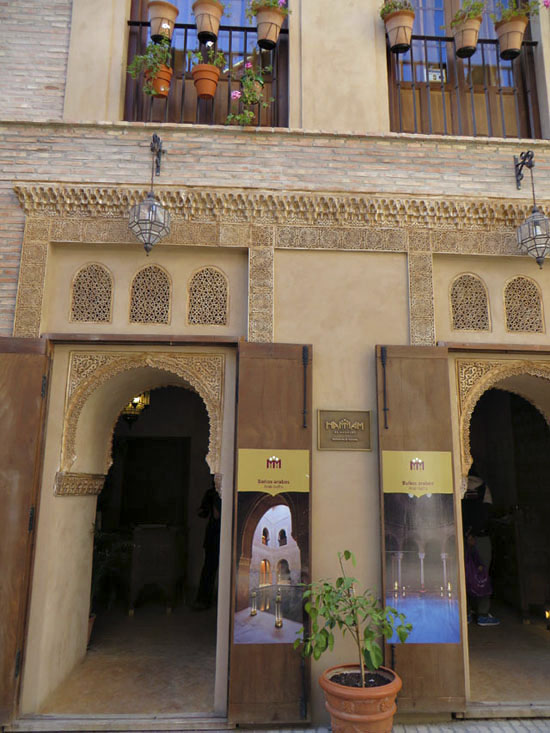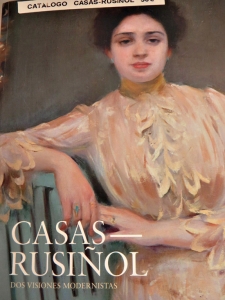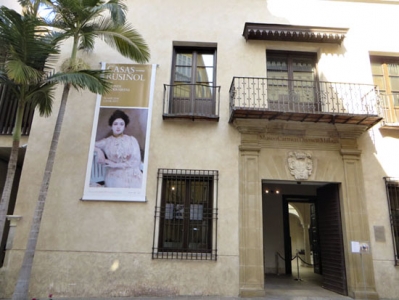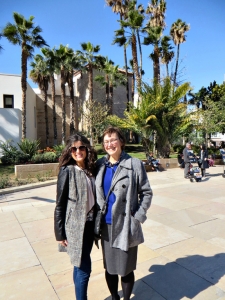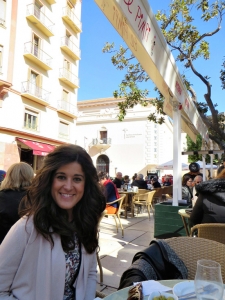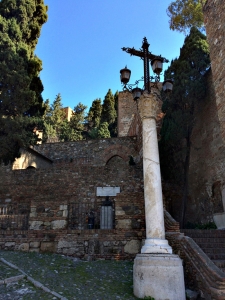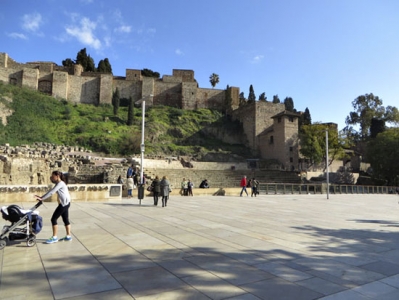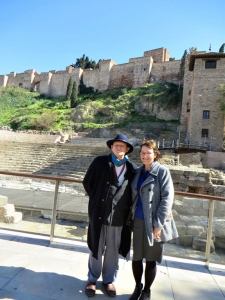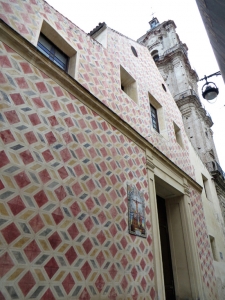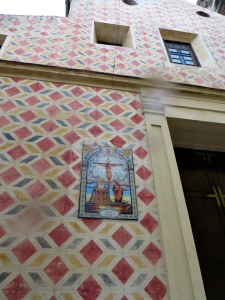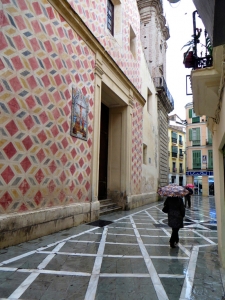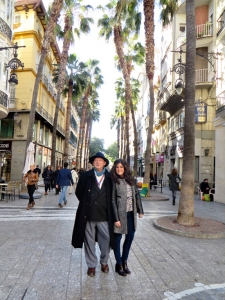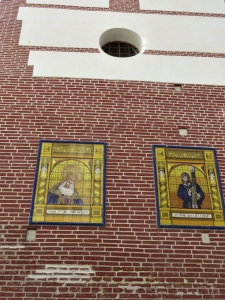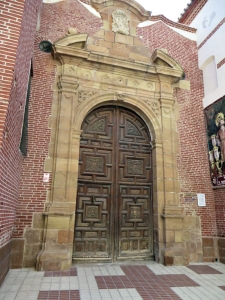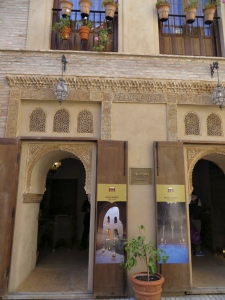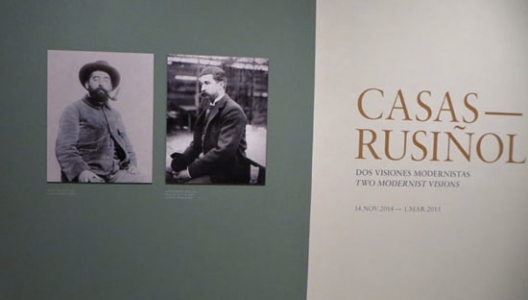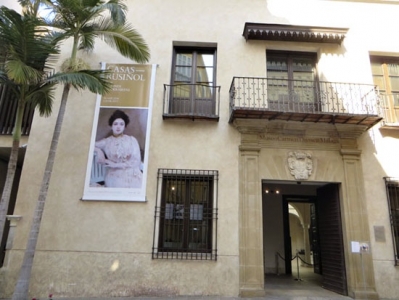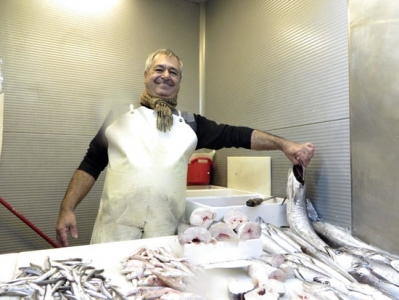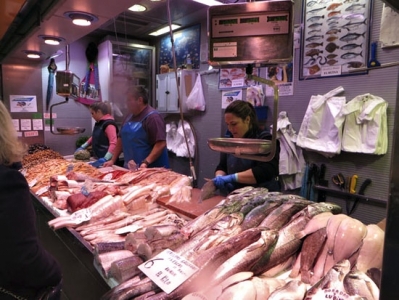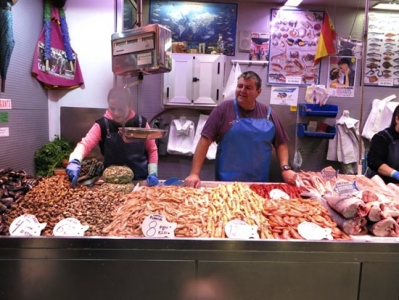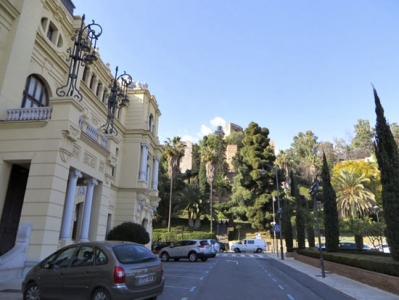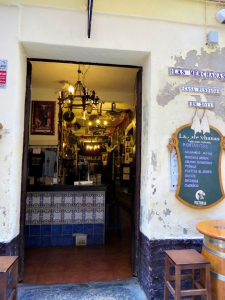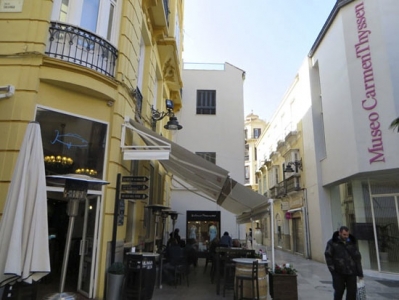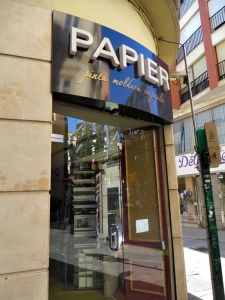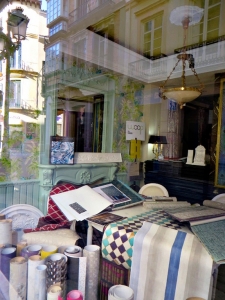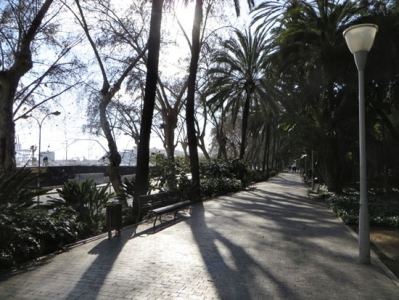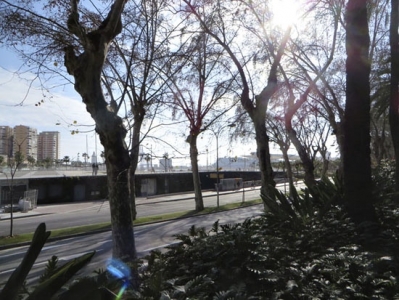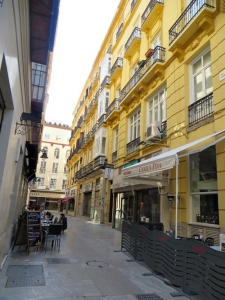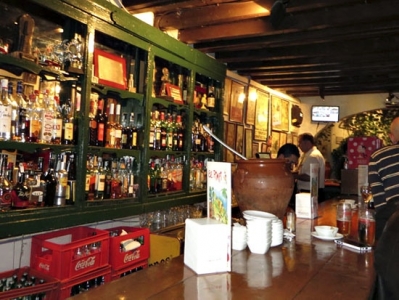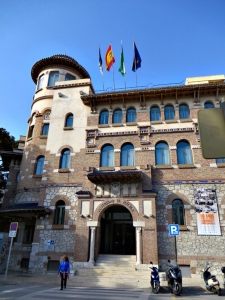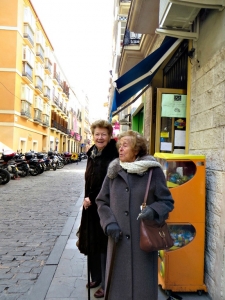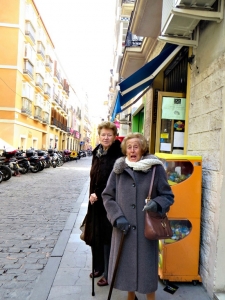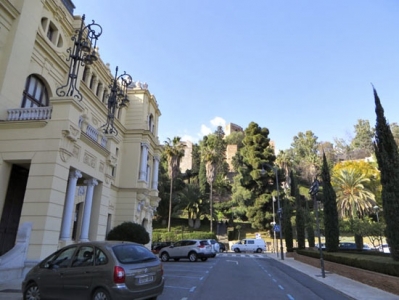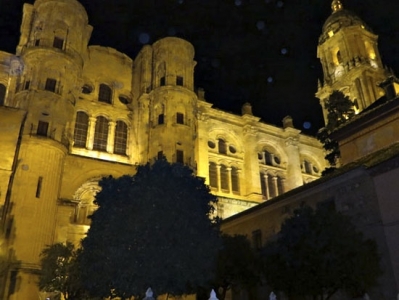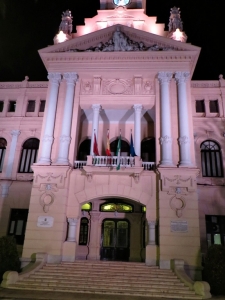Malaga is an old port city with some 3,000 history since the Phoenicians landed and used the harbor for salting fish. They were followed by the Greeks in the 6th century B.C., then the Romans who ruled for six centuries, and under which Malaga prospered as a trading post. Today it’s a city rich in historical references, but its also a lively city with a modern and artful edge to it. With layers of history and culture waiting to be discovered, or absorbed in a meandering way by the fortunate traveler with a bit of time, the old city center is a joy to explore on foot. There is the Alcazaba, the most beautiful living example of the times of the Moors. There is the great Cathedral built on the ruined mosque. And everywhere are charming traditional balconied buildings, narrow pedestrian streets and plazas, and plentiful tapas bars, tavernas, cafeterias, restaurants — places to to what the Spanish love so well — to sit, eat, talk and drink.
A bit more of Malaga’s history:
In 711 A.D. the Moors invaded Spain and called her Al-Andalus. Malaga became an important Moorish city and port, until a bitter siege that ended in the Christian armies victory in the “Reconquesta.” During the Golden Age of Spain, 1500-1650, the nobility deserted the city in favor of Seville and Cadiz, but it remained important to the lucrative slave trade.
In the 19th century Malaga prospered as middle class families moved from the north bringing wealth and investing in factories, shipyards, sugar refineries and iron ore foundries. Malaga wine became the favorite of Victorian ladies and wine exports soared.
During the Spanish Civil War, Malaga was outwardly Republican, the result of which was repression and persecution and in 1937, attacks by Franco’s Nationalist forces. There was mass panic, an exodus, executions and emotional scars left to this day.
In the 1960’s Malaga’s big break came in the form of flights and high speed trains. With its superb Mediterranean climate, Malaga had in earlier times been a favorite residence for wealthy English invalids–and the tradition continues with the influx of European and American expats who choose to live in the region. Malaga, of course, is the hub on the Mediterranean coast of southern Spain, and the region of Andalucia, with its famous beaches along the Costa del Sol. Add to this the rural towns that attract expats as well as the kind of rural tourism and wine tourism that is being developed, and you have a very interesting destination with modern and international appeal.
The best place to enjoy the sight of the beautiful Alcazaba, as well as an interesting mix of visitors, would be the sunny terrace at El Pimpi’s, the famous restaurant and bar. This is the place to see and be seen, while keeping your eye out for Malaga’s native son, Antonio Banderas.
Malaga Streets


